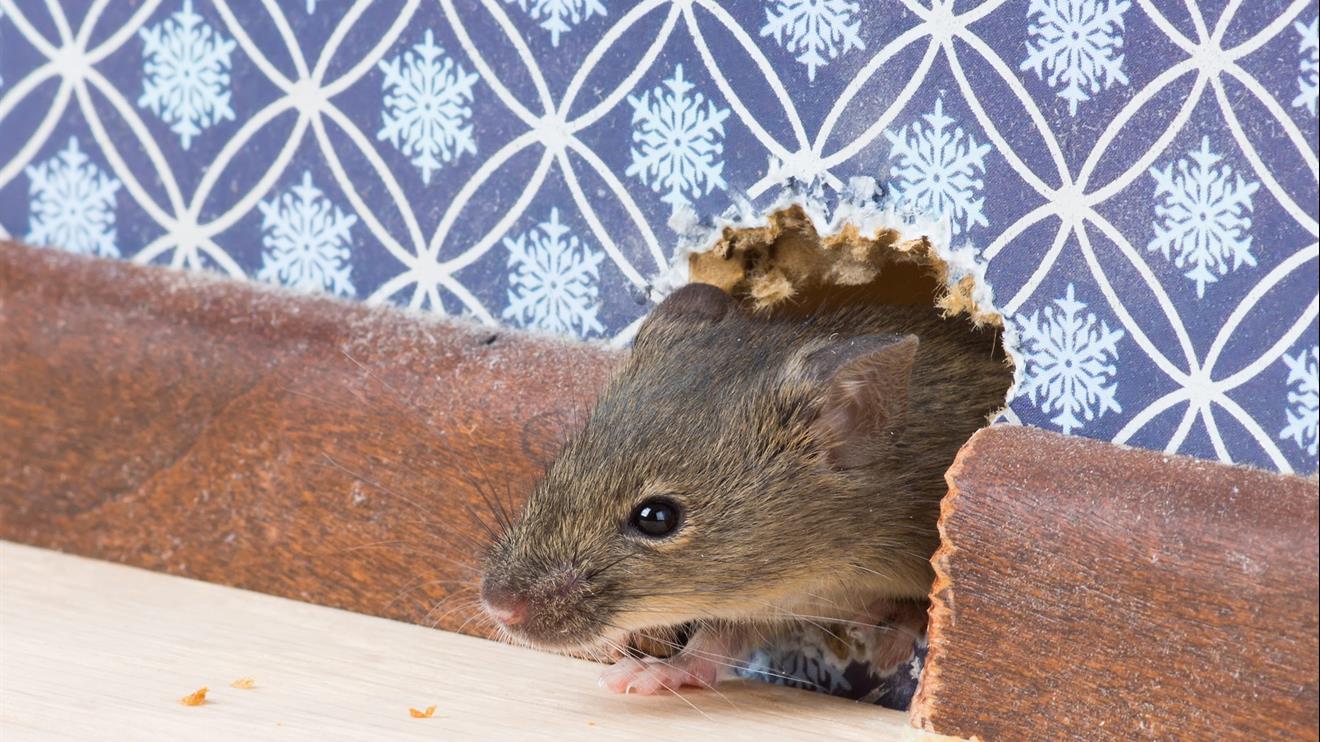How to Get Rid of Rodents
April 10, 2019 12:37 pmHow to Get Rid of Rodents
It’s difficult to describe the shock you feel when you see a rodent in your home. They are filthy, destructive, and can cause significant property damage because they like to chew or gnaw on insulation, siding, drywall and wires. They eat a variety of food, including what you have stored in your cupboards or pantry thus exposing you to foodborne illnesses. And in some cases, diseases can be spread if you are bitten by a rodent (approximately fifty thousand people are bit each year), or if you are exposed to areas that are contaminated by their droppings. So, when they show up in your home, it’s hard to stay calm. Fortunately, you can take several steps to control them.
Step 1: Look for Signs of Rodent Activity
Rats and mice are easy to detect, and most people discover them by seeing signs of their presence. From chewing through a box of food in the pantry to feeding on fruit left on the counter, they can leave a mess. When your house is quiet, it’s possible to hear rodents moving around (running between walls, in attics and under foundations) or even chewing. Dark brown droppings where rodents eat, and travel are a sure sign of infestation. Look for droppings near food sources. Also, rodents follow the same paths as they search for food, so they leave greasy marks along sideboards and walls. Look for chew marks on wood around the house as they need to gnaw to keep their teeth sharp. Additionally, go outside and look for any holes in the ground that weren’t there before. Rodents always stay close to their nests, which could be in the yard or the house.
Step 2: Eliminate Food and Water Sources
Rodents can eat just about anything – including garbage! So, the first step in eliminating your pest problem is to adjust how you store food and scraps. Keep food in sealed containers and clean up any spills or crumbs. Since rats need a reliable water source, make sure you have no leaks in your pipes or faucets. Keep your garbage can lids on tight. Store pantry items, like grains, sugar, and cereal, in glass containers. If you have an animal, don’t leave food out for it, since rats will eat whatever is in the bowl.
Also, look outside. Remove any fallen fruit from your yard and keep your property perimeters clear of plants, stored lumber or junk. Trim the foliage near your home to eliminate certain hiding and nesting spots. Trim branches of trees or shrubs to prevent access to roofs or balconies, and cover pools and whirlpools when not in use.
Step 3: Eliminate Entry Points
Building them out, or rodent-proofing your home, is an effective way to stop infestations from occurring or expanding. Defend your home from rats and mice by eliminating points of entry and easy access. This can be difficult due to their ability to squeeze into even the smallest of openings. A good rule of thumb is if you can fit a pencil into a crack, hole or opening, a small rodent can get in.
Seal cracks in the foundation as well as openings in the walls, including where utility pipes and vents are. Steel wool and caulking works great here. Cover crawl spaces, fresh air and attic vents, and seal any possible entry points in the home that are more than a quarter inch big. Pay close attention to door jams and gaps between the siding and the house foundation. Get weather stripping for door and window gaps and make sure the sweep on your door creates a seal against the threshold when it’s closed. Avoid using plastic, rubber, wood or anything else mice can easily gnaw through as sealants.
Step 4: Set Up Traps and Baits
Traps or baits can be used separately or together as part of a system of rodent control to make sure you cover all bases. The method you choose depends on your preferences. Can you stand seeing the rat once it’s caught? The major difference is that a trap physically holds the rodent in place. This is ideal if you want proof that the rodent was caught or for tracking purposes. Trap types include glue traps, mechanical traps, or even catch-and-release traps.
With baits, a rodent typically consumes a lethal dose then travels back to its nest to die 1-2 days later. Bait stations come in various levels of tamper resistance and in disposable and refillable options to use just about anywhere. They can kill multiple rodents at one time, however, keep in mind that rats and mice are wary of new foods. They might nibble a teeny bit of something new, then wait to see if it harms them. If they accept new food, they’ll gorge on it until they’re full and other rats will follow suit. That’s why effective baits often take a few days to work. If they killed immediately, most rodents would avoid them. So, keep out a supply of fresh bait for at least 10 days or until there are no more signs of rat or mice activity.
Step 5: Cleaning Up Areas Where Rodents Have Been
While dealing with a rodent problem it is important to follow proper cleaning procedures to prevent diseases from occurring. Always use gloves and a mask and try not to use a broom or vacuum because you want to minimize stirring up dust when you are cleaning areas where they have lived. This includes ventilating any enclosed area for 30 minutes and wetting down the area with household disinfectant before you start. Most disinfectants and household detergents are effective. However, a mixture of 1-part bleach and 10-parts water can also be used. Pour the mixture carefully onto the area to avoid disturbing any virus present and do not use a sprayer.
Wipe up droppings, nesting materials and other waste with a paper towel and place it in a plastic garbage bag. Double bag the contents, seal the bags, and then bury, burn, or place the bags in the trash. Wash your rubber gloves with disinfectant or soap and water before removing them. Then wash your hands with soap and water after removing the gloves.
Step 6: Maintenance and Prevention
Rodents can survive on just a few grams of food per day, so some crumbs here and there are all they really need. Vacuum your floors regularly and be sure to wipe down counters, eliminating residue, crumbs and any access to food sources. Store food in glass jars or airtight containers and don’t forget about securing your garbage. Remember, rodents come into your home looking for food, water, and shelter. If you deprive them of food and water and make it difficult for them to get in, then you should be in the clear.
If you need help or tips for getting rid of rodents, especially if you’re trying to sell your house, or want to buy a new home that might have rodents give us a call. Advice is always free!
Tags: Bait, Exterminate, Levine Homes, Mice, Pest Control, Pests, Rat Problem, Rats, Rodent Problem, Rodents, Traps






